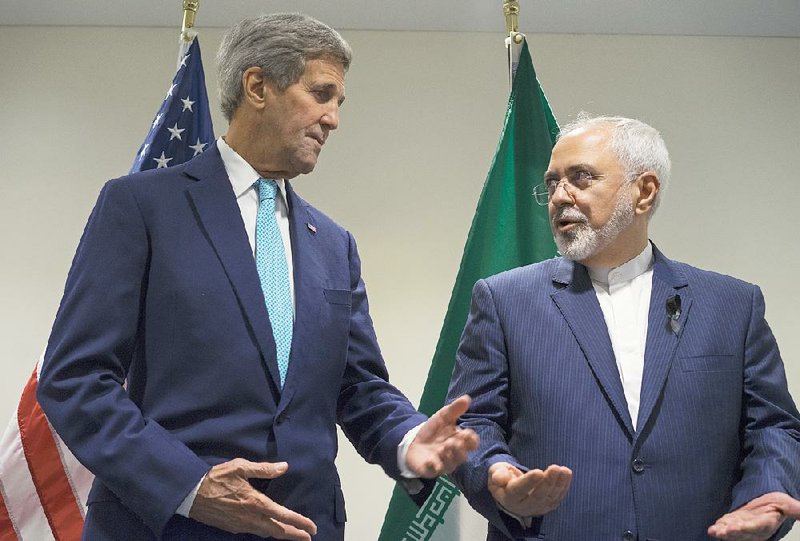VIENNA -- Iran has started cutting back on some nuclear technology, which could be re-engineered to make nuclear weapons, in line with a deal with six world powers, a United Nations nuclear agency report said Wednesday.
However, diplomats familiar with the report said the country is keeping on standby thousands of machines that could be used for such a purpose.
The U.N.'s International Atomic Energy Agency report and the diplomats' assessments present a mixed picture of the pace of Iran's moves to comply with the July 14 deal it signed with the six countries -- U.S., the United Kingdom, France, China, Russia and Germany -- and come about a month after the deal was formally adopted Oct. 18.
The report said Iran in the past month has significantly reduced the number of centrifuges meant to enrich uranium, which can produce nuclear fuel, isotopes for research, or the core of an atomic bomb, depending on the degree of enrichment.
It said 11,308 centrifuges were standing at Iran's main enrichment center as of Sunday, a drop of about 3,000. It also noted cuts at a smaller facility, for a total reduction of about 4,500 of the nearly 20,000 machines Iran had previously set up.
But the diplomats said all of the machines that have been taken out were previously idle. Thousands of centrifuges that were spinning uranium into enriched levels used for fuel are no longer online but remain on standby and can be restarted on short notice.
Under the terms of the deal, Iran is allowed to keep 5,060 centrifuges operating to enrich at levels significantly below weapons-grade and at concentrations normally used to generate energy. That is about half of the number it had running before the pact's adoption.
The two diplomats demanded anonymity because they were not authorized to comment on the contents of the restricted report being circulated to the U.N. Security Council and the 36-nation nuclear agency board.
One of the diplomats said it is normal to start the cuts with the machines that have never been put to work because the process of removing the ones that have been enriching is more complex.
But the other, from a Western country suspicious of Iran's nuclear program, noted that the Iranians publicly have linked full implementation of the deal to another report meant to put to rest the allegations that Tehran worked in the past on atomic arms.
Those Iranian officials have said Iran will not enact meaningful cuts in its enrichment program or other activities that could be used to make nuclear arms until that report is published next month.
The Islamic Republic denies any work or interest in such weapons and describes the allegations as based on falsified intelligence from Israel, the U.S. and other nations that accuse it of trying to develop nuclear arms.
After fending off the nuclear agency's attempts to investigate the allegations for more than a decade, Tehran agreed to cooperate with the agency under the condition that it delivers a final report that will put the matter to rest.
Iran was promised sanctions relief under the terms of the deal. Beyond cutting back on uranium enrichment, it also must re-engineer a reactor to reduce its output of plutonium, another pathway to an atomic bomb.
The deadline for both sides to show they have upheld their commitments is expected to be early next year.
A Section on 11/19/2015
